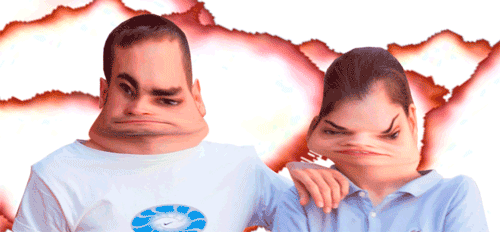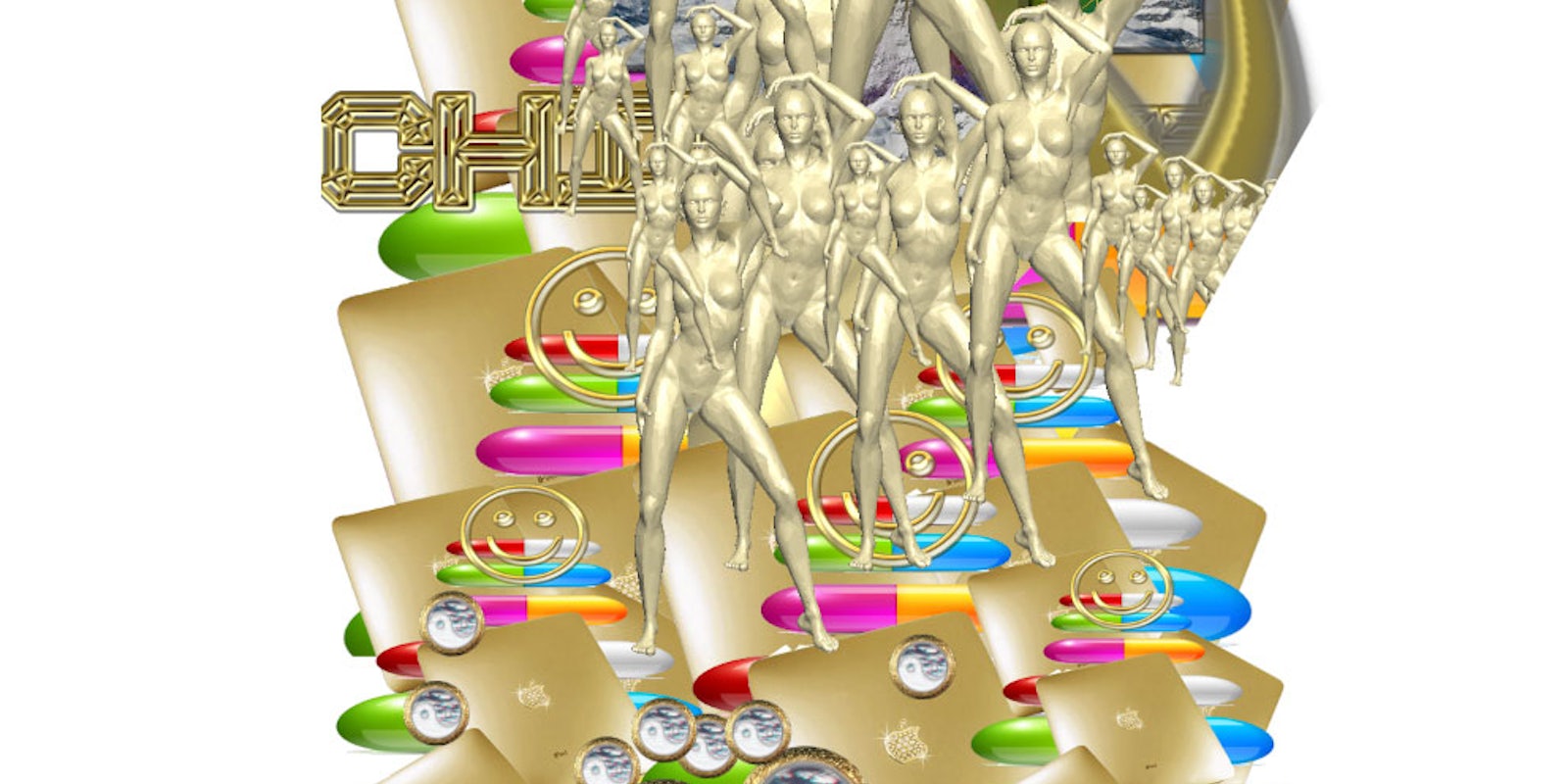
All Tumblrs have a visual theme when encountered outside the Dashboard, whether it’s a custom theme or the plain ol’ comforting blue default. For most, a theme is an aesthetic or functional choice of self-expression, designed to best deliver whatever creations or curations the blogger desires. For a growing number of multidisciplinary creators, the theme is the creation. A good example is Cloaque, a self-described “digital landfill” that takes the form of endless collage of imagery, animation, video, or anything else the rotating cast of participants imagines. We spoke with cofounder Carlos Saez about how Cloaque came to be and why it will never ever stop.
There are several people involved in the Cloaque project. How did they come together? Where is everyone based? What are their roles? What do they do for a living when they are not working on this project?
There are a lot of people who make up Cloaque, and this will only ever increase. The project is the brainchild of Claudia Mate and myself, and we’re both based in Madrid. The impetus behind it is to invite people whose work we like to join and continue an infinite, digital collage. The project lends itself perfectly to the internet as it allows us to work with people from around the world, thus removing the obstacle of location in artistic collaboration.

So far, those involved are from totally different artistic disciplines, ranging from illustration, graphic design and 3D to fashion and the web. If you click on the “people” tab on the website, you can check out everyone’s artwork for Cloaque and follow their personal websites. This helps you gauge the diversity of collaborators.
What’s the significance of the name?
I had a strange fetish for the word for years. I wasn’t even sure of its meaning but liked the combination of letters. Then when researching the project I discovered that it was in fact a part of a bird’s (and some reptiles) excretory system: It is the place where excrement, urine, and sperm meet. It also translates as an open sewer. The connotations of the word suddenly became very fitting with the idea of the project.
Also, from an aesthetic perspective, I wanted something using my lucky number, 5. When deconstructed, the numeric symbol for “5” is in fact a “C” and an “L,” therefore the name suited me perfectly on multiple levels.
Cloague is described as a “digital landfill.” How does that influence the images and themes you select to use?
I think it has more influence on the way we work. I don’t look for anything special, I just save the images that I perceive as “digital trash” — the name given to the big stream of images that people upload to the internet for only one specific use. The images, however, stay online, floating around cyberspace with no use. What I do is take the images that I perceive as having meaning. Every collaborator is therefore free to choose between continuing the collage with digital trash, like Allan Schaffer did, or, by generating his own material like Emilio Gomariz or Rollin Leonard. However the work has been done we chose to keep the definition of digital landfill, because that’s how it all began.
Describe the process of creating the collage effect once you’ve chosen a set/kind of images to use.
There is no specific way of doing it. I guess every collaborator has a different process. In my case, all PNG files are produced in Photoshop. I open a file in PSD and add selected elements. Sometimes I select simply due to shape or color, and sometimes I choose specific images to construct around a selected subject. Sometimes I open a big file (divisible in 7 Cloaque files, for example), and I cut it into pieces after I have finished, and sometimes I work in the same file: composing, saving, and shifting down to start again. Claudia, for example, creates more 3D collages, so I guess, like all of us, she has her own way of working.
Do you feel there’s a level of connectedness running through each section of the artwork or is each section its own, apart from the transitions?
Cloaque now has its list of collaborators full through August, and some of them have already begun their work. It’s therefore impossible to know what the other artists are doing. They have all however seen what Cloaque is about, so I’m sure there is still some influence by previous works. Even so, we are keen to develop the integration between different artists.
Do you imagine an endpoint for the project? If so, what do you hope to have achieved or illustrated by then?
Cloaque has the potential to be an infinite project and should never come to an end. Claudia is in fact going to procreate a few children just to raise them into the world of Cloaque! Actually, we are constantly thinking about new ways of expression within the project. We see it as constantly evolving and there will be constant surprises unveiled along the journey.
Any other creative projects you’re working on or thinking about?
Claudia and me I are thinking about new online works. We like the idea of intervention within different social networks and how you can use them as a platform for artistic projects. As it stands, Tumblr is the most accessible for this medium.

